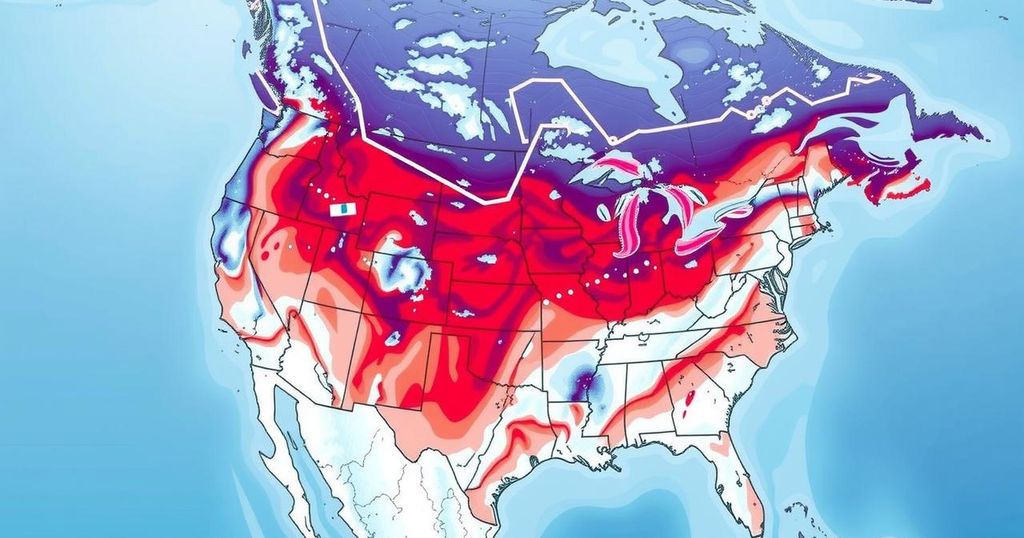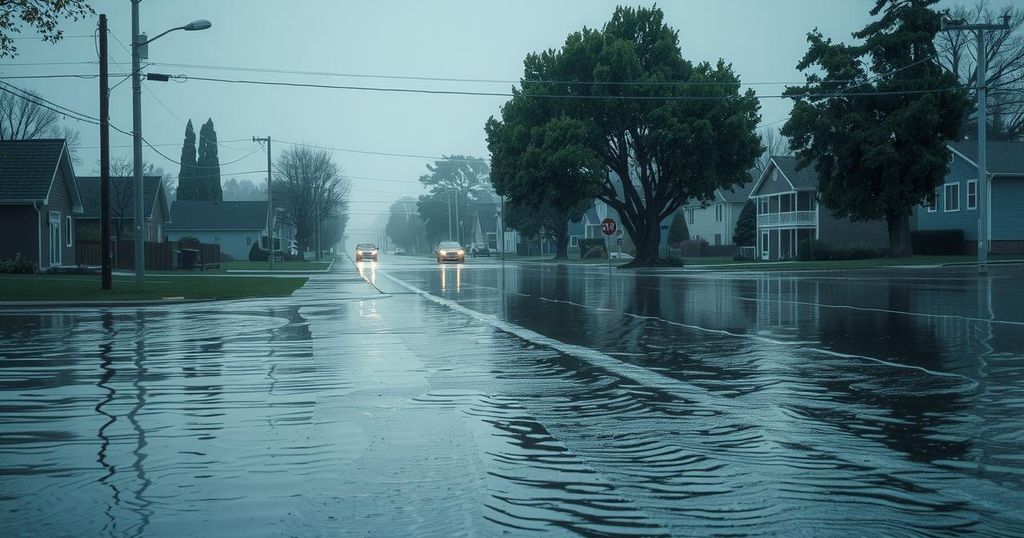Arctic Outbreak Sets In: Subnormal Temperatures Expected Across North America
An Arctic outbreak is bringing below-normal temperatures to Eastern Canada and the U.S. Starting from Siberia, frigid air is expected to reach even southern states, dramatically changing the winter climate. Kitikmeot communities are already facing extreme cold, with temperatures in major cities like Philadelphia and Washington, D.C., dropping significantly. Although these outbreaks occur frequently, they can lead to severe consequences, as demonstrated by the 2019 outbreak.
The commencement of the New Year heralds a drastic temperature drop across North America as an Arctic outbreak makes its way southward from Siberia. According to information from the U.S. National Weather Service’s Climate Prediction Center, this Arctic cold is anticipated to push temperatures in Eastern Canada and the United States significantly below normal. Brian Proctor, a meteorologist at Environment Canada, explains that the situation is fueled by cold air masses that traverse the North Pole, reaching the northern regions of Canada before progressing into the southern states as far as Florida.
Recent reports indicate that communities in Kitikmeot are experiencing extreme cold, with temperatures plummeting below -30°C, compounded by wind chills that sink as low as -50°C. Meanwhile, Iqaluit, which had enjoyed abnormally mild weather, is projected to cool down to -17°C by January 8. The temperature in Eastern Canada has shown a decline, falling from -1°C on January 2 to a high of -11°C on January 5.
Although this cooling trend is not unusually severe for the region, meteorologist Proctor noted, “Not tremendously cold from what they can experience, but it’s definitely cooling down.” Conversely, the eastern United States is set to witness more drastic losses in temperature. In Philadelphia, Pennsylvania, forecasts anticipate a plunge below -17°C for the first time this century, while Washington, D.C., will reach similar lows not seen since 2019. Proctor mentions that temperatures are projected to start increasing towards the end of next week.
While Arctic outbreaks are common during this season and occur “fairly frequently,” the historical context remains significant; the 2019 outbreak caused over 20 fatalities across the United States and resulted in extensive flight disruptions due to wind chill factors dropping below -49°C. As this weather phenomenon unfolds, residents are advised to prepare for the significant cold ahead.
The article discusses the occurrence of an Arctic cold outbreak originating from Siberia, impacting Eastern Canada and the United States as the New Year begins. The phenomenon, characterized by a sudden influx of frigid air, disrupts typical seasonal weather patterns, leading to temperature drops that can be extreme. Such outbreaks are part of a natural climatic cycle, yet they can carry severe consequences, including health risks and disruptions in transportation.
In summary, the onset of the New Year is accompanied by a significant Arctic outbreak, resulting in below-average temperatures across Eastern Canada and the eastern United States. This weather event is driven by a mass of cold air from Siberia and serves as a reminder of the harsh realities of winter. Historical precedents underscore the potential dangers associated with such phenomena, emphasizing the importance of preparedness among residents.
Original Source: nunatsiaq.com




Post Comment